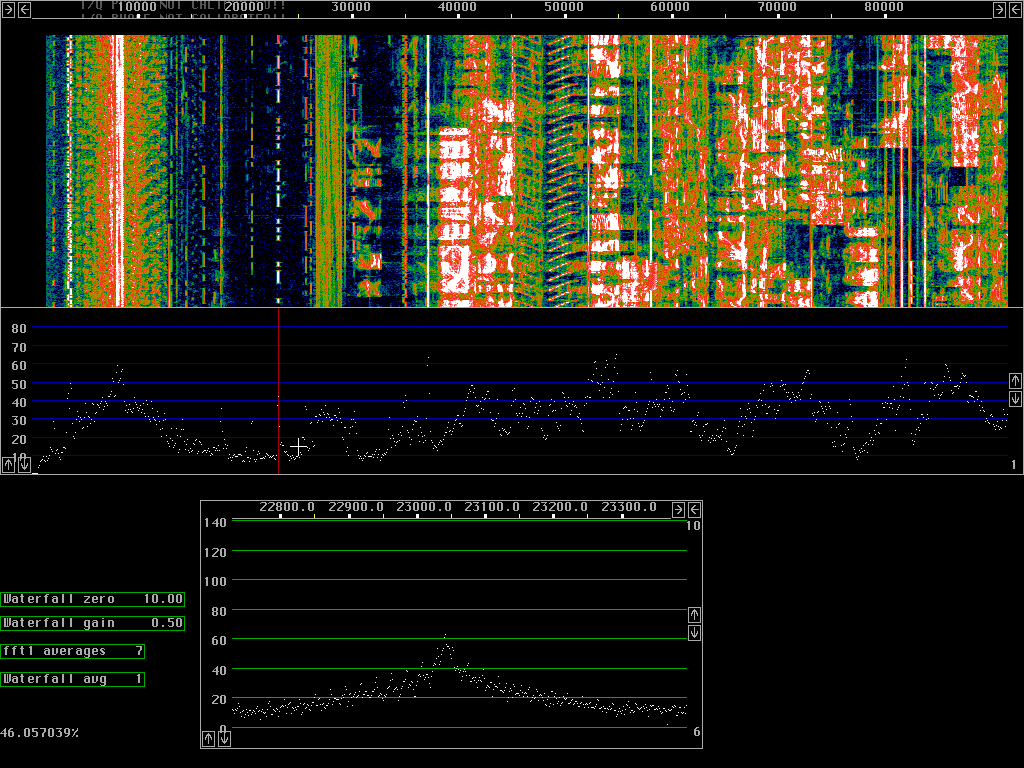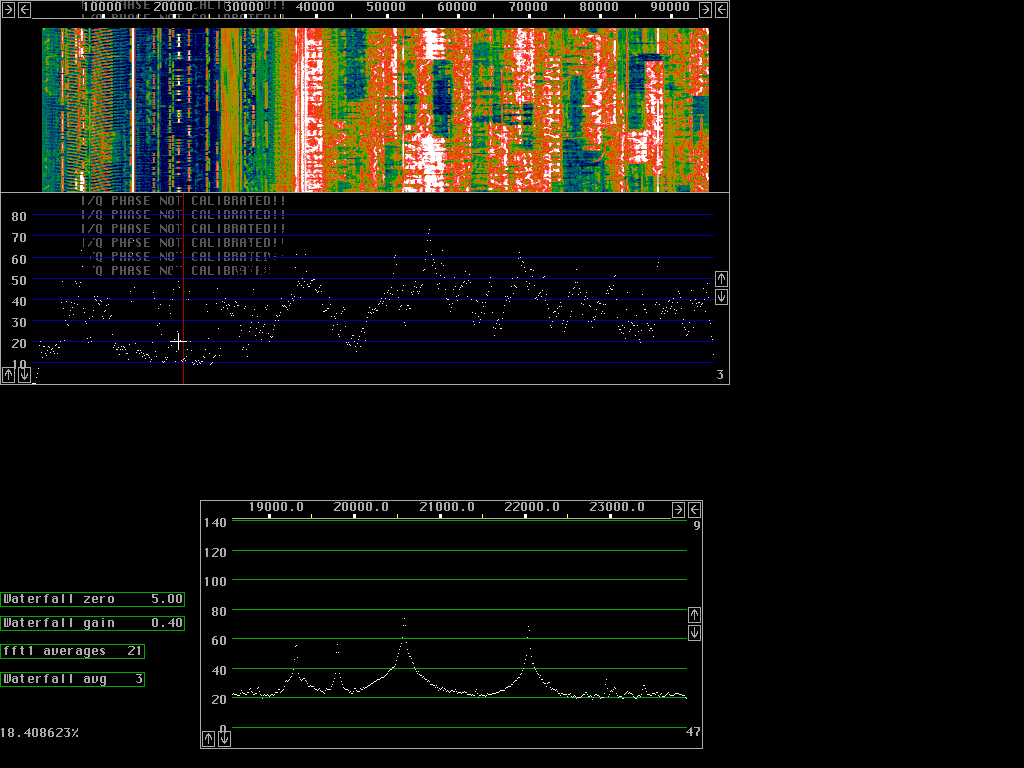
The first mixerIf the AFC is disabled the passband selected by the operator is simply mixed to the baseband with a constant frequency of the local oscillator. If the second fft is not enabled there is no noiseblanker so the input signal from the A/D is used as it is.Since most bandwidth is obtained with direct conversion receivers the processing for complex input waveforms is most time critical. The first mixer can be made by complex multiplication of the input signal by a sine/cosine table followed by a low pass filter that selects the desired passband. Finally the number of points can be reduced to reflect the reduced bandwidth. The Linux dsp package does the same thing by using the fourier transforms that are already calculated. By picking a small part of the spectrum symmetrically around the selected frequency and then make the inverse transform the baseband signal is obtained directly with a reduced sampling speed.
Baseband graph parametersThe wide graph, spectrum and waterfall has a total bandwidth given directly by the A/D board sampling speed. The baseband bandwidth is a power of two lower. Fig 1. shows a typical graph from 7MHz with a bandwidth ratio of 64. The size of the baseband fft is 1024 (N=10) which is indicated in the upper right corner of the baseband graph. The first fft covers 96kHz but only a part of it is shown on the screen. In Fig.1 the baseband width is 1.5kHz and each pixel is 1.46Hz. Only about half the spectrum is shown. To show more, click the mouse on the left or right border line and make the window bigger. Note the keying sidebands that are visible both in the waterfall graph and in the baseband spectrum. Fig 2 is produced with the same parameters. A different station is selected.The size of the baseband graph fft and thereby the resolution is set by the boxes in the upper right corner. The number in the lower right corner, 6 in fig 1 shows how many transforms are averaged to produce the power spectrum. The number is chosen for the time constant to be 2 seconds. A cosine squared window is used so the interleave factor is 2. The remaining boxes are for the dB scale. The baseband graph is always shown with one pixel per fft bin so the window has to be made small enough before a very small fft can be selected. To produce figs 1 and 2 about 45% of the computing power of a PentiumIII computer at 650MHz was needed. Most of it is graphics. With a little slower waterfall graph as in fig 3 less than 20% is needed and with normal averaging about 10%.
|

Fig 1.
Typical view of 7MHz.
The selected signal is marked by a red line.
The waterfall graph is run without averaging so the keying is
clearly visible.
Keying clicks extend several hundred Hz on both sides as one
can see from the baseband graph.

Fig 2. All parameters the same as in fig 1. Just a different station selected.
|
In figure 3 the bandwidth ratio is 16 and the baseband is 6kHz wide.
Here the baseband graph shows the signals present in normal SSB
bandwidth with 11.7Hz per point
|

Fig 3. The bandwidth ratio is 16 so several signals are visible in the baseband here.